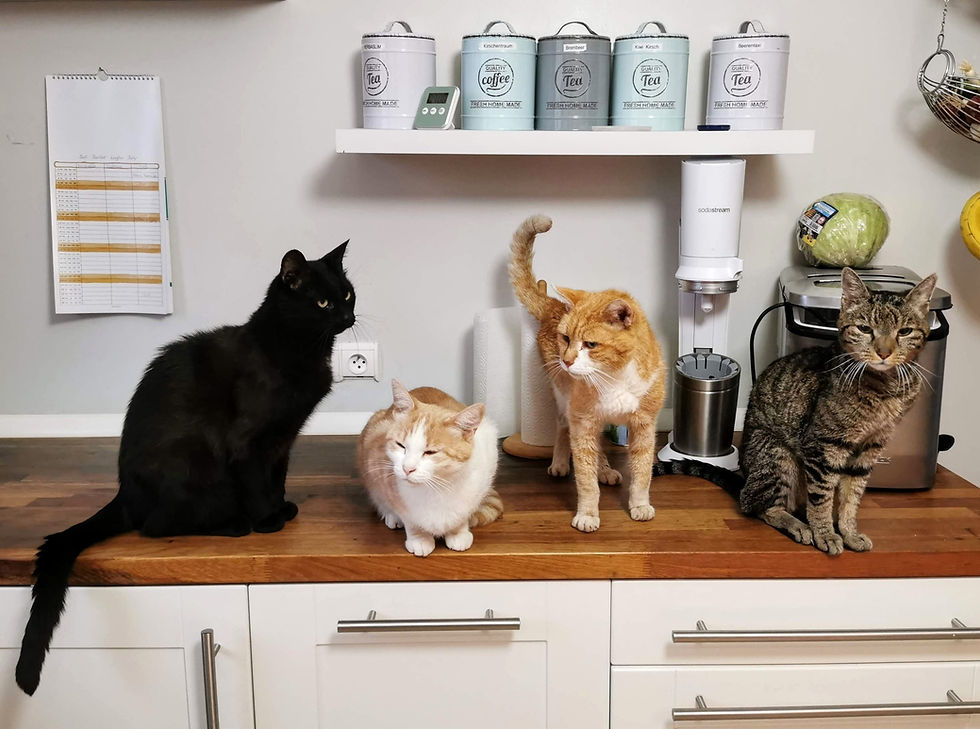FIP Treatment Cat: Understanding the Symptoms, Diagnosis, and FIP Treatment for Recovery
- CURE FIP™ USA

- Sep 10, 2023
- 3 min read
Updated: Mar 17, 2024
This elusive and often fatal disease has left many feline companions and their devoted owners feeling helpless. However, recent advancements in veterinary medicine, including groundbreaking antiviral treatments, have brought a ray of hope to the feline community. In this comprehensive guide, we will explore the intricacies of FIP treatment for cats, from diagnosis to available therapies and the promise of a brighter future for our beloved furry friends. FIP is typically manifested in two forms: effusive (wet) FIP and non-effusive (dry) FIP. Both forms share some common symptoms, making early diagnosis challenging.

Common FIP Symptoms in Cats:
Fever: A persistent high fever is often one of the initial signs.
Lethargy: Cats with FIP may become increasingly lethargic and lose their playful nature.
Decreased Appetite: A noticeable loss of appetite can be a symptom, leading to weight loss.
Fluid Accumulation: In effusive FIP, fluid can accumulate in the chest or abdominal cavity, leading to breathing difficulties and a swollen abdomen.
Neurological Issues: In some cases, neurological symptoms, such as seizures or uncoordinated movements, may occur.
FIP Diagnosis
Diagnosing FIP is a complex process that requires a thorough evaluation by a skilled veterinarian. Dr. Niels Pedersen, a renowned feline health expert, has played a pivotal role in advancing our understanding of FIP. His research has contributed significantly to improving diagnosis and treatment options.
The Diagnostic Process:
Physical Examination: The veterinarian will start with a physical examination and discuss your cat's medical history.
Blood Tests: Blood tests, including antibody and PCR tests, help in identifying the presence of the coronavirus and the likelihood of FIP.
Symptom Evaluation: The presence of symptoms consistent with FIP, along with test results, aids in diagnosis.
The Multifaceted Approach to FIP Treatment
In the past, FIP was considered nearly incurable, and treatment options were limited. However, thanks to the tireless efforts of researchers and veterinarians, new treatment avenues have emerged. These treatments primarily target the replication of the virus causing FIP.
Key Components of FIP Treatment for Cats:
1. Antiviral Drugs: Antiviral drugs, in particular GS 441524, have shown success in inhibiting the replication of the FIP virus. These drugs offer hope for cats diagnosed with this devastating disease.
2. Supportive Care: Cats with FIP often require supportive care to address their symptoms and maintain their overall health. This can include nutritional support, pain management, and addressing fluid accumulation.
3. FIP Warriors: Dedicated pet owners, often referred to as "FIP warriors," play a crucial role in their cat's journey to recovery. Their unwavering commitment to their feline companions is a testament to the deep bond between humans and cats.
4. Dry vs. Wet FIP: Understanding the form of FIP affecting your cat is essential. While treatment approaches may vary, both dry and wet forms of FIP can benefit from antiviral therapy.
The Role of GS Treatment for FIP in Cats
GS 441524, a relative of Remdesivir, has emerged as a potential game-changer in the world of FIP treatment for cats. GS Treatment for FIP is been successful with many cats experiencing improved health and even full recovery. The treatment protocol typically involves a series of subcutaneous injections administered under veterinary supervision.
Key Aspects of GS-441524 Treatment:
Precise Dosage: Achieving the correct dosage is crucial for treatment effectiveness. Veterinarians work closely with cat owners to ensure accurate dosing.
Monitoring Progress: Regular veterinary check-ups and monitoring of your cat's condition are essential throughout the treatment process.
Transparency: FIP treatment can be emotionally challenging, but transparent communication between veterinarians and pet owners is a cornerstone of success.
CureFIP US: Your Trusted GS-441524 Partner CURE FIP™ USA is considered to be support to succesful cat FIP treatment for cat owners in the United States and Canada grappling with the complex challenge of Feline Infectious Peritonitis (FIP). What distinguishes CureFIP US is our unwavering dedication to providing precise GS 441524, the essential antiviral treatment for FIP. Here, you'll discover not only medication but also a team of committed FIP experts ready to support you at every stage. Our exacting GS-441524 concentrations, combined with their profound FIP knowledge, ensure that your beloved feline companion receives optimal care. When it comes to FIP treatment in the United States and Canada, CureFIP US is a name synonymous with both medication quality and expert guidance. Your cat's well-being is our foremost concern.







Comments